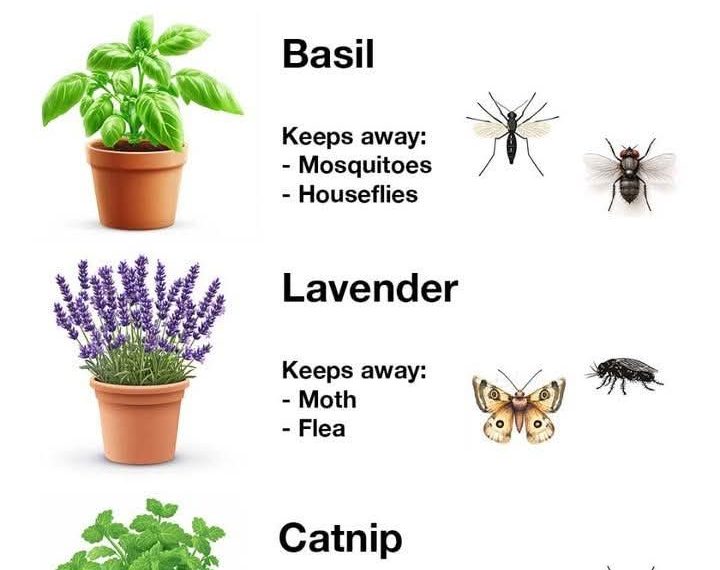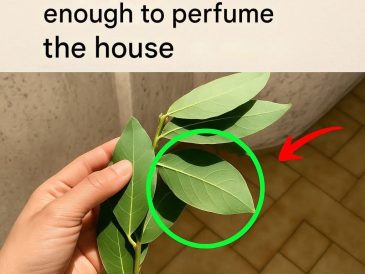15 Top Plants That Keep Pests Away – Natural Protection Starts Here
When it comes to protecting your home and garden from pests, nature offers some of the most beautiful and effective solutions. Certain plants are known not just for their beauty or fragrance, but for their pest-repelling properties. Whether you’re dealing with mosquitoes, aphids, flies, or even mice, these plants can offer a natural, non-toxic line of defense.
Here are the first 8 powerful pest-repelling plants you can grow indoors or outdoors:
1. Lavender
- Pests it repels: Moths, fleas, flies, mosquitoes
- How it works: Lavender’s soothing floral scent might relax humans, but it overwhelms many bugs. Its essential oils are commonly used in natural repellents.
- Where to plant: Sunny garden beds, window boxes, or in pots on your patio.
- Bonus: Attracts pollinators like bees and butterflies!
2. Basil
- Pests it repels: Mosquitoes and houseflies
- How it works: The intense smell of basil is a natural mosquito deterrent. It also produces compounds that are toxic to mosquito larvae.
- Where to plant: In pots near entrances or on kitchen windowsills. Also thrives in garden borders.
- Bonus: Delicious in salads, sauces, and pasta.
3. Marigolds
- Pests it repels: Aphids, nematodes, mosquitoes, whiteflies
- How it works: These bright flowers release pyrethrum, a compound found in many insect repellents.
- Where to plant: Along the edges of vegetable gardens, especially near tomatoes and peppers.
- Bonus: Vibrant colors all season long.
4. Mint
- Pests it repels: Ants, mosquitoes, mice, and spiders
- How it works: The sharp menthol scent is overwhelming to most pests. It also masks the scent trails ants follow.
- Where to plant: In containers (mint spreads aggressively if planted in the ground).
- Bonus: Use for tea, mojitos, or fresh breath.
5. Rosemary
- Pests it repels: Mosquitoes, cabbage moths, and carrot flies
- How it works: The aromatic oils in rosemary can be released by simply brushing against the plant. Burning sprigs in a fire pit also repels flying insects.
- Where to plant: Garden beds or pots in full sun. Can be grown indoors with strong light.
- Bonus: Great for seasoning meat, potatoes, and vegetables.
6. Chrysanthemums
- Pests it repels: Roaches, ants, beetles, lice, ticks, and silverfish
- How it works: Contains pyrethrin, a natural insecticide that affects an insect’s nervous system.
- Where to plant: Indoors near windows or outside in flower beds.
- Bonus: Long-lasting blooms with vibrant colors.
7. Lemongrass (Citronella Grass)
- Pests it repels: Mosquitoes
- How it works: Contains citronella oil, a well-known mosquito repellent.
- Where to plant: Large pots on patios, terraces, or entryways.
- Bonus: Adds a tropical look and fresh citrus scent.
8. Catnip
- Pests it repels: Mosquitoes, cockroaches, and flies
- How it works: Contains nepetalactone, which is more effective than DEET in some studies.
- Where to plant: In containers or wild patches. Be aware: cats will visit.
- Bonus: Great fun for your feline friends!
9. Bay Laurel (Bay Leaf Plant)
- Pests it repels: Flies, moths, roaches
- How it works: The essential oils in bay leaves give off a strong scent that disrupts insect behavior and feeding patterns.
- Where to plant: In containers near doors and windows, or keep dried leaves in pantry shelves.
- Bonus: Use the leaves to season soups and stews.
10. Garlic
- Pests it repels: Aphids, beetles, ants, mosquitoes
- How it works: Garlic emits sulfur compounds through its roots and leaves, creating a natural barrier against many pests.
- Where to plant: Around vegetable patches or borders.
- Bonus: Strong natural antibiotic properties for you — and a powerful scent barrier for bugs.
11. Petunias
- Pests it repels: Aphids, tomato hornworms, squash bugs, leafhoppers
- How it works: These bright annuals release a light fragrance that repels soft-bodied insects.
- Where to plant: Flower beds, hanging baskets, or near vegetable gardens.
- Bonus: Low maintenance and continuous blooms.
12. Oregano
- Pests it repels: Mosquitoes and various beetles
- How it works: Oregano contains carvacrol and thymol — powerful natural compounds that deter bugs.
- Where to plant: In herb gardens or pots on the kitchen windowsill.
- Bonus: A must-have in Mediterranean dishes.
13. Lemon Balm
- Pests it repels: Mosquitoes and gnats
- How it works: Like its cousin mint, lemon balm gives off a potent citrus-mint aroma that keeps flying pests away.
- Where to plant: In containers (it spreads quickly like mint).
- Bonus: Calming tea ingredient that’s great for stress and digestion.
14. Alliums (Onion Family: Chives, Leeks, Garlic, etc.)
- Pests it repels: Aphids, carrot flies, cabbage worms
- How it works: The sulfur-rich smell of allium plants confuses and wards off pests trying to find their favorite crops.
- Where to plant: Between rows of vegetables or flowers.
- Bonus: Adds bold flavors to any savory meal.
15. Tansy
- Pests it repels: Ants, fleas, beetles, flies, and even mice
- How it works: Tansy contains thujone, a potent compound that wards off crawling and flying insects.
- Where to plant: Around compost bins, near outdoor seating, or at the garden’s edge.
- Caution: Tansy can be toxic if ingested in large amounts by pets or humans — best kept in controlled areas.
- Bonus: Stunning yellow blooms that last through summer.
Final Thoughts: Bringing Balance to Your Space
Pest control doesn’t always have to come from sprays and chemicals. With a little planning, you can create a living defense system that’s not only safe and eco-friendly, but also beautiful, fragrant, and useful in the kitchen.
By combining these pest-repelling plants — indoors and outdoors — you’ll enjoy fewer bugs, healthier plants, and a more vibrant, functional space.





